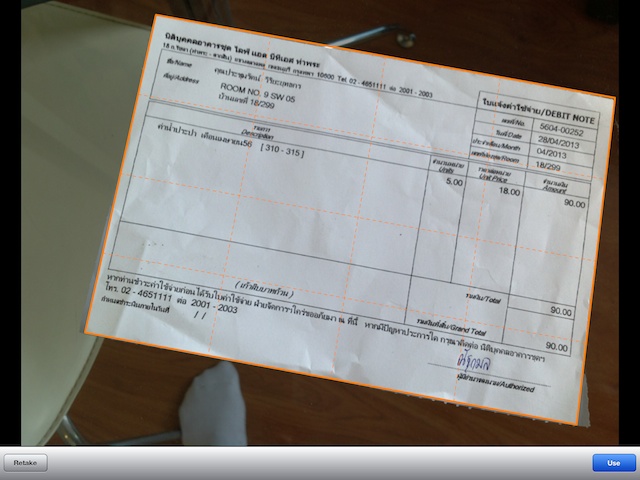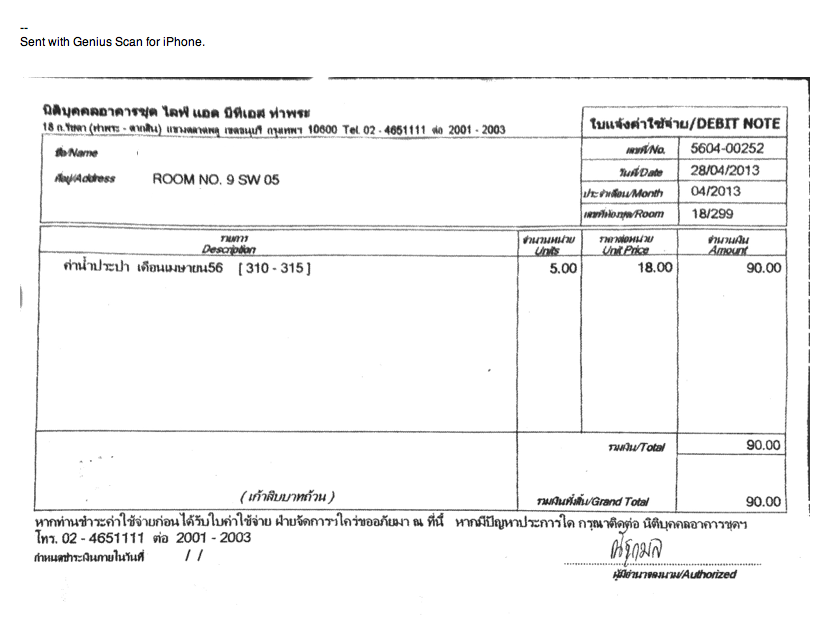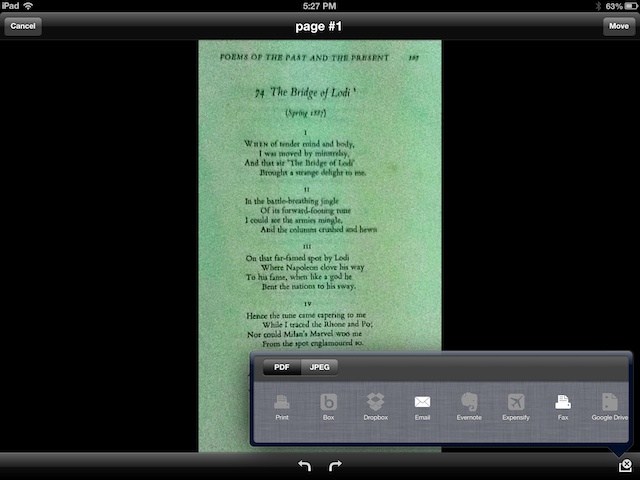|
By Graham K. Rogers

I find that one of the more useful apps I have that uses the camera on the iPhone, is one that creates a PDF (or jpg) from input of a document and then allows the user to store or send that output by email: Genius Scan - PDF Scanner. I tend to use this, for example when paying a bill and sending notification. I did it this week when I paid for the eXtensions website.
I formerly used a DSLR camera, but there are always minor problems with alignment and this is overkill anyway. Genius Scan - PDF Scanner gets round this by sensing the outer limits of a document and cropping. By doing this, the saved image is far better aligned. If the outline is not perfect, the user can move the borders easily and a more accurate rendition of the scanned document can be saved.
This app has saved me hours of fiddling about and it is free, although there is an in-app purchase ($2.99) for the Pro version, Genius Scan+ which has no ads. The pro (or +) version also allows uploads to Box, Dropbox, Evernote, Expensify and Google Drive. I had already upgraded on the iPhone - for $2.99 it seemed pointless not to - and used Restore on the iPad version to bring that up to speed as well.
The app has now been updated to version 3.2, with some significant changes, most notably iPad optimisation: instead of the former x1 and x2 displays (which were OK), the app now works full screen. In addition (all this for a free app remember), the user now has access to the Photo Library, so documents already photographed may be worked on.

Scan of a water bill
On the iPad, access to either camera or photos is by a two-part button. It looks like one button, but input depends on which side I pressed. I scanned a water bill for the apartment, deliberately positioning it at an angle. I had to take care to get focus right and once I had snapped the image, the orange grid was superimposed. I did have to make a couple of minor corrections, but as soon as I pressed, "Use", a clear black and white PDF was displayed full screen.
A slider icon at bottom left allows for No Enhancement, Black and White (my default selection), or Color. Selecting any of the other two options changes the image in a couple of seconds.

At the bottom center of the screen are arrows for rotation, pressing once applies a 90 degree rotation (twice, 180 degrees, etc.). To the right, pressing the Export arrow brings up a panel with available options. Pressing one that is greyed out produces a warning about the Pro version and an offer to make the upgrade. When PDF is selected as output, a greyed out Print icon is available, but the user may use Fax. When JPG is the selection, export options include Twitter and Facebook.

Scan of a Hardy poem from an old book
One other feature I discovered was WiFi access which allows documents on the iOS device to be imported and used. A was able to transfer a document to the bowser on the Mac then save it or open in Preview. That may save me some work at the office with printing via the secretary's computer.
On the iPhone the only change I was aware of was the new Camera/Library button that I had seen on the iPad installation too. When exporting via email, the user is offered a number of image size options from Small to Actual Size. I do prefer using the iPhone for taking pictures like this as the device fits so easily in the hand.
Although many users have no problem taking photographs with the iPad, it does not suit me so well. Nonetheless, apart from my dexterity problems, the app works fine on both devices.
I have been using Genius Scan since June 2011 and it has been a real productivity booster, not only in terms of paying my bills and letting the creditors know, but as a way to produce a viable PDF in double-quick time, for example in a meeting.
The latest update, which now makes Genius Scan universal and able to run as a native app on the iPad, is a significant step. As before this is highly recommended and I urge users to go for the Pro update: to access the extra features; and to reward the developers - Grizzly Labs - for a job well done.
Graham K. Rogers teaches at the Faculty of Engineering, Mahidol University in Thailand. He wrote in the Bangkok Post, Database supplement on IT subjects. For the last seven years of Database he wrote a column on Apple and Macs.
|







